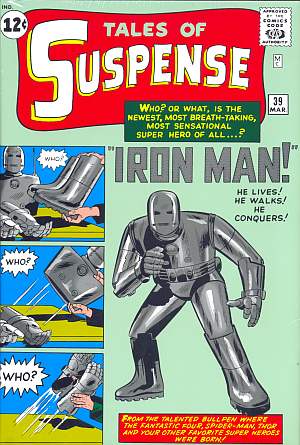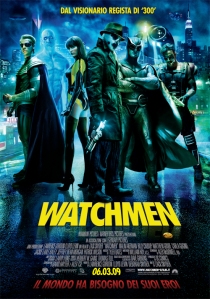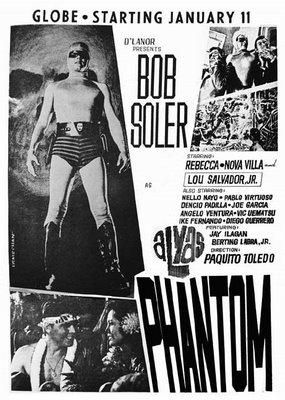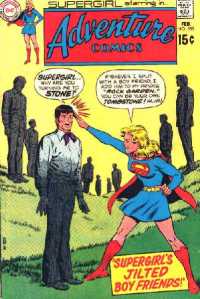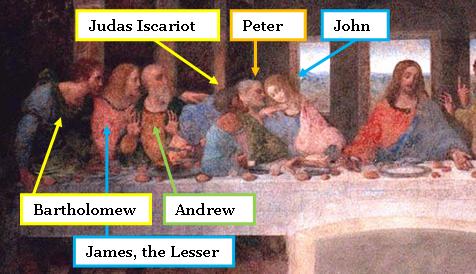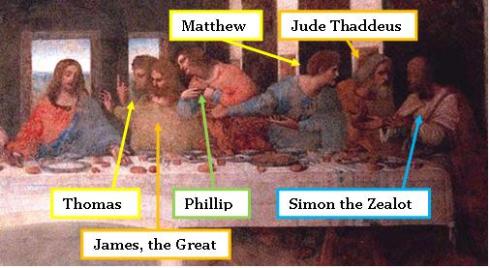Who came first Batman or Superman?
by aLjI– IF you’re wondering who can turn comic books into movies faster than a speeding bullet, I’ll say the Filipinos can.
After stumbling into Dennis Villegas’ and Andrew Leavold’s websites, I’ve come to the conclusion that the Philippines is quicker on the draw… or was quicker.
The ‘50s up to the ‘70s seemed quite an exciting period in Philippine cinema based on these posters and “komiks” both bloggers have posted on their sites– proof that back in the day when copyright infringement was more blurry than it is today; Philippine cinema and the Komikbook industry had quite an impressive output of plagiarized superheroes.
Here are some samples in a blog we’ll call:
WHO CAME FIRST…?
1. “IRON MAN: The Movie “or “CAPTAIN BARBELL Kontra CAPTAIN BAKAL” Da Pelikula?!
Iron Man first appeared in Tales of Suspense, published by Marvel Comics in 1963.
“Iron Man: The Movie” starring Robert Downey, Jr was released in 2008 .
“Captain Barbell Kontra Captain Bakal” (obviously, “Captain Bakal” was the Iron Man of the Philippines) starring Willie Sotelo as “Captain Barbell” and Carlos Padilla, Jr. as “Dario” was shown in 1965…
…43 years before Downey’s blockbuster film.
2. “LITTLE MERMAID” or “DYESEBEL”?!
“Little Mermaid” is an original Hans Christian Anderson tale published in 1837 .
There have been a lot of versions in both films and TV shows. The most famous today is, of course, the Disney cartoon “Little Mermaid” which was shown in 1989.
The Philippine movie version starred Jaime Dela Rosa and Edna Luna as “Dyesebel”, a dead-on copy of the Little Mermaid. It was shown in 1953…
…a full 36 years prior to the famed Disney version.
3. “BATMAN” or “ALYAS BATMAN AT ROBIN”?!
After the success of Adam West’s “Batman” TV series, they turned it into a full-length film creatively called… “Batman”, and was released in 1966.
The movie follow-up came a bit late via Tim Burton’s … hold your breath…“Batman”, starring Michael Keaton in 1989.
The Philippines had its own movie version featuring Bob Soler and Lou Salvador, Jr. in “Alyas Batman at Robin” and was released in 1965…
…one year before the Adam West-movie and
…24 years before Tim Burton’s.
“Holy cajoney, Batman!”
4. “CATWOMAN” or “PUSSYCAT”?!
Speaking of Batman, one of his arch nemesis or ex-girl friends (depending on which storyline you believe) had a solo production in “Catwoman” with the scorching Halle Berry playing the . But as hot as Halle was, the critics and audiences gave it the cold shoulder and it flopped back in 2004.
Not so with its Philippine version titled “Pussycat”. It starred the equally hot Divina Valencia (of the classic “Divina Valencia, Estella Suarez, nagbu-burles.. song) and was released in 1969…
…35 years before Halle’s unimpressive movie. “Pussy-cat” was a certified hit in ’69 right on that memorable summer of free love and free pussy, if you know what I mean.
5. MR. FANTASTIC in the “FANTASTIC FOUR” or “LASTIKMAN”?!
Marvel superhero Reed Richards (a.k.a “Mr. Fantastic”) of the Fantastic Four is an exact copy of DC Comic’s “Plastic Man”. Why do I say this? Well, just look:
The thing is Plastic Man came out in the comics on August 1941, while Marvel’s version called Mr. Fantastic appeared 20 years after on November 1961.
Go figure.
Anyway, Mr. Fantastic was brought to the movie screens only in 2005 in “Fantastic Four” played by Ioan Gruffudd. Maybe because the technology to show Mr. Fantastic’s power to extend various parts of his body (hmmm…?) were not available yet, the Hollywood version was a bit late.
Movie special effects were not a problem in the Philippines back in 1965 when Von Serna (Snooky’s dad!) appeared as “Lastik Man”—Yes! pLastic Man, without the “P”– 40 years before Hollywood’s Mr. Fantastic.
Anak ng P , talaga!
If you think that was strange, how about this mash-up:
6. “THE SPIRIT” + THE QUESTION + MR. A
+ ROSARCH of the “Watchmen” + “SPIDERMAN”
= “CAPTAIN GAGAMBA”?!
The Spirit created by the great Will Eisner first appeared as a newspaper insert in 1940.
Hollywood turned it into a movie in 2008, written and directed by another great artist: Frank Miller (300 and Sin City).
The Question (below) and Mr. A (below The Question) appeared in 1967 although in different comicbooks: The Question in Blue Beetle #1 while Mr. A in Witzend # 3.
These comic book heroes, both created by Steve Ditko, clearly play up the Q and A reference: “Question and Answer”. Get it?
Alan Moore created Rorschach (below) for the comic book series The Watchmen in 1986 and admittedly says that Rorschach was based on Ditko’s The Question.
The Watchmen was shown in 2009 to rave reviews (there’s Rorschach in the middle).
Spiderman was the creation of Stan Lee and Steve Ditko (again!) and was first seen on Amazing Fantasy # 15 in August 1962.
Then in 2002, Sam Raimi directed the movie“Spider-Man” starring Tobey Maguire.
And then it got weird-err:
Just a year after Spider-Man’s comic book debut, out comes the movie “Bakas Ng Gagamba”! It featured Bernard Bonnin (Charlene Gonzales-Muhlach’s father) in 1963.
This Pinoy superhero is an obvious combination of The Spirit, The Question, Mr. A (note: the fedora hat) and yes, Spider-Man (place Spidey’s chest on Gagamba’s face and you’ll get the picture).
Now if the US version starring Tobey Maguire had sequels, the Philippine version had more:
Part 2: “PALOS KONTRA GAGAMBA” (1963)
Part 3: “ANG LIHIM NG GAGAMBA” (1963)
Part 4: “GAGAMBA AT SI SCORPIO” (1969)
Spider-Man 4, also known as “Spider-Man Reboot” will be out in theaters on 2012—almost 50 years after “Gagamba at si Scorpio”.
7. “PHANTOM” or “ALYAS PHANTOM”?!
While writing this part, I suddenly noticed the frequent use of the words “Alyas” and “Captain” in most of these old Filipino films. I guess the words “Alyas” and “Captain” it makes it seem like it’s the original without claiming to be the original. Pretty smart, huh?
Anyway, here’s another Alyas-movie– “Alyas Phantom”!
The comic book character the Phantom was created by Lee Falk in 1936.
“Alyas Phantom”, the Filipino film was shown in 1966, a mere 30 years after, starring Bob Soler and Nova Villa (the comedienne) as his leading lady.
It was such a hit, another version came out in 1974 where the Phantom became a transvestite of some sort, with gay icon Vilma Santos as its star called “Phantom Lady”.
The Hollywood version came early this time (thank goodness!) in 1943 with a 15-part movie-serial starring Tom Tyler and Jeanne Bates. But the Phantom-movie everyone remembers today was the one starring Billy Zane in 1996 called “The Phantom”.
You do remember Billy, right?
Stop shaking your head.
8. “SUPERGIRL” or “SUPERGIRL”?!
First of all, Supergirl has never been Superman’s girl friend. She’s actually his cousin. In 1959 Kara Zor-El appeared in Action Comics #252 wearing the same Superman costume after crashing on earth from Planet Krypton.
Fourteen years later, by some Kryptonian miracle, Supergirl appeared in the Philippines as the actress Pinky Montilla in a movie with the same title: “Supergirl” in 1973.
In 1984, 11 years after the Philippine version, Hollywood came up with “Supergirl” starring Helen Slater. According to Wikipedia “It failed to impress critics and audiences”.
Both movies were not as super as they expected.
9. “SUPERMAN the Movie” or “ZOOM, ZOOM, SUPERMAN”?!
The most famous Superman movie version was, of course, the 1978 film “Superman” starring Christopher Reeve. This movie came out 40 years after Superman first appeared inside the pages of Action Comics # 1 created by Jerry Siegel and Joe Shuster in 1938!
If you think Hollywood had one over the quick Filipino filmmakers of the ‘70s, think again.
In 1973, a full five years before Chris Reeve donned the red cape as “Superman” , a Filipino version called “Zoom, Zoom, Superman!” broke all Philippine box-office records existing at that time.
It starred Ariel Ureta (I guess, the top matinee idol that time?) and he had the best directors of Philippine cinema directing this three-in-one Ariel Ureta treat (like, one was not enough): Elwood Perez, Joey Gosiengfiao and National Artist for Cinema Ishmael Bernal.
Can Brian Singer beat Ishma, the National Artist? Guess not.
10. “POPEYE” or “POPEYE ATBP”?!
Proof that Ariel Ureta was quite a box-office draw in the ‘70s, the same producers quickly came up with a follow-up just months after in 1973 called “Popeye Atbp”, directed by the same directors. Talk about striking while the iron is hot.
Popeye is the world’s most famous sailor-man, created by E.C. Segar as a newspaper comic strip in 1919. So, the Philippine movie version was late by about 54 years.
How late was Hollywood this time? About 61 years late!
In 1980, Robert Altman directed Robin Williams in the live-action-sing-along-film Popeye. It was Robin’s first movie and Popeye’s last.
Hollywood didn’t even attempt a sequel.
SOURCES:
Andrew Leavold
Dennis Villegas
Warner Brothers
The 12 Apostles: Skinned, Stoned, Sawed, Burned and Beheaded
(LjI) AS we remember the Passion of our Lord Jesus Christ this Holy Week, have you ever wondered what happened to the 12 Apostles after Jesus died on the cross? We all know that the Romans and the powerful Jewish leaders in Jerusalem were all looking for them for being guilty “by association”.
This source tells us that the Apostles (except, of course, Judas Iscariot) “… locate a ship and sailed away” to another city, leaving Jerusalem for fear of being arrested. They only came back to Jerusalem– after all the excitement and controversy quieted down– during Pentecost (originally a Jewish festival celebrating grain harvest and commemorating Moses receiving the Ten Commandments). But, according to Acts 2:1:4, while the Apostles gathered for the feast:
“…Suddenly there was a noise from heaven like the sound of a mighty wind. It filled the house where they were meeting. Then they saw what looked like fiery tongues moving in all directions, and a tongue came and settled on each person there. The Holy Spirit took control of everyone, and they began speaking whatever languages the Spirit let them speak.”
That’s how they received the Holy Spirit—and soon after, they courageously left their hiding place and started preaching and performing miracles, in the name of Jesus Christ, right in the streets of Jerusalem and in different languages!
Try to imagine the simplest, most quiet and easily intimidated man you know (most of the Apostles were fishermen, remember) suddenly speaking out like the smartest university professor you admire or a veteran politician on a reelection campaign trail—and you’ll get the idea on how miraculous this was.
During that time according to this source, “many religious Jews from every country in the world were living in Jerusalem … they were hearing everything in their own languages.”
The noise and activity attracted a huge crowd and the Apostle Peter preached a sermon to the crowd with great effectiveness that “On that day about three thousand believed his message and were baptised…” (Acts 2:41) establishing a solid and unstoppable Christian group in Jerusalem.
And as Jesus asked of them in Mark 16:14:
“Go yea into all the world and preach the good news to every creature.”
SO THEY DID.
But where did they go?
What did they do?
And what happened to them?
Let us use Da Vinci’s “Last Supper” (photo above) as our starting point:
Bartholomew (skinned alive and beheaded)—Preached the Gospel in Mesopotamia (Iraq), Persia (Iran), Turkey, Armenia and India. He was skinned alive and beheaded at Derbent (Azerbaijan, near Russia) on the Caspian Sea by order of a local king after a majority of the people of Derbent converted to Christianity. Some of Bartholomew’s skin and bones are still kept in The Basilica of St. Bartholomew in Rome, a part of his skull is in Frankfurt, Germany and an arm is venerated at the Canterbury Cathedral in England.
James, the Lesser (stoned and clubbed-to-death)—Believed to have preached in Damascus (Syria) and acknowledged as the first bishop of the Christians in Jerusalem (Israel). Historians say he was sentenced to be stoned-to-death by the Jews for challenging Jewish Laws and for convincing some of members of the Jewish community to convert to Christianity. James died when during the stoning, one person from the crowd approached him and bashed his head with a fullers club (a piece of wood used for bashing-washing clothes). He was buried on the spot where he died, somewhere in Jerusalem.
Andrew (crucified upside down on an X-shaped cross)—Preached in Georgia (Russia), Istanbul (Turkey), Macedonia and finally Greece. There in Patros, Greece, the Governor Aegiatis was angered by the apostle’s preaching and the conversion of his own family to Christianity. He ordered Andrew to renounce his faith in front of a tribunal. When Andrew resisted, the governor ordered that Andrew be crucified. He was tied upside down to an X-shaped cross with thick, tight ropes but Andrew kept preaching to spectators. He was able to convince many to accept Christianity just before he died after suffering for three days. Parts of his remains are in Constantinople (Turkey), Scotland (United Kingdom), but his skull is kept in Patras to this day.
Judas Iscariot (suicide, death by hanging)—Best known as the apostle who betrayed the Lord by divulging His location, leading to His arrest and persecution. He received 30 pieces of silver from Jewish priests for the information he gave. Prior to this, Judas served as the treasurer of the 12 Apostles; in charge of keeping the group’s budget/money. Sources could not agree on how he died. There are three accepted versions: (1) he committed suicide by hanging himself to a tree, (2) he accidentally fell on a field– head first (3) he was crushed by a passing chariot (4) he was stoned-to-death by the other 11 Apostles. But all four agree that “his bowels gushed out” (Ewwww!) on all four accounts. Authors and scholars also agree that his guilt was a major part of the cause of his death.
Peter (crucified upside down)—Recognized as the head of the original Christian community in Jerusalem (Israel), he left the city when King Herod Agrippa I started to persecute all Christians in Jerusalem and ordered the beheading of the Apostle James (the Great) . After escaping from Jerusalem, Peter preached in Judea (originally Palestine) and in Antioch (Syria) where he is historically considered as the first patriarch (bishop) of the Orthodox Church. After staying in Antioch for some time, Peter went to Rome and converted thousands into Christianity. The emperor at the time, Nero, did not like the idea of Romans becoming Christians and used the new members of the group for his amusement (e.g. feeding them to lions or wild dogs, and then burning them at stake in Rome’s coliseum—yes, the tourist spot– if they do not renounce their faith). Peter was one of the most prominent victims of this persecution. He was captured and crucified upside-down at his own request, because he said he was not worthy to be crucified the same way as our Lord. St. Peter’s body lies below the altar of St. Peter’s Basilica at the Vatican City, in Rome.
John (thrown into boiling oil, but survived)—For most of his labours, John was with Peter in Jerusalem up until the persecution of Herod Agrippa I. During this period, scholars agree that Johh escaped and preached for sometime in Asia Minor (an area around Turkey). Years later, scholars have traced that he went to Rome where it was believed he was persecuted with other Christians and was thrown into a cauldron of boiling oil—he miraculously survived. The Roman emperor at the time, Dominitian, decided after the incident to banish John to the island of Patmos (in Greece). When Dominitian died, John went back to Ephesus (in Turkey) where he spent the rest of his days. He died a very old man, the only Apostle to do so.
Thomas (impaled by a spear)—Called by most Christians as the “Doubting Thomas” for disbelieving the Lord’s Resurrection. But after his doubts were erased by touching Jesus’ wounds, he became a fearless preacher of the Gospel and builder of churches. He was the only Apostle who witnessed the Assumption of Mary and the one of the first Apostles who preached outside the boundaries of the vast Roman Empire (out of Europe). He preached in Babylon (present day Iraq) and established its first Christian church. Then he went to Persia (Iran) and travelled as far as China and India. He was martyred in Mylapore, India when a local king named Masdai condemned Thomas to death. The Apostle angered the Brahmins (high ranked priests/scholars who served as the king’s advisers) who thought Christianity disrespected India’s Caste System. Thomas was brought to a nearby mountain and was stabbed-to-death with a spear. He is believed to be buried around the suburb of Madras, in India.
James, the Great (beheaded)—Brother of the Apostle John. He decided to preached the Gospel in Iberia (around Spain) and be the first to build a Christian foundation in the area. But according to some scholars, the Virgin Mary appeared to James and told him to return to Judea (around Israel) to help the other Apostles. He was captured and condemned to die by Herod the Agrippa 1 to please Jewish leaders who were furious at the rapid growth of the Church. James’ chief accuser was later convinced that the Apostle was indeed blessed by the Lord, he himself requested to be beheaded with James. After this, James’ body was brought back to Spain by his disciples and was buried in the area where the cathedral of Santiago de Compostela is located, which is now considered as a major religious site.
Phillip (crucified)—Preached in Greece, Syria and in Turkey (in the cities of Galatia, Phrygia and Hierapolis). Philip partnered with Bartholomew in his missions. Like all Apostles, Philip became an exceptional speaker. According to sources “Through his miraculous healing and preaching, Philip converted the wife of the Preconsul of the city” of Hierapolis. Of course, this event angered the Preconsul and ordered that both Philip and Bartholomew be tortured and crucified upside down. While on the cross, Philip continued to preach and he was able to convince the crowd and the Preconsul to release Bartholomew, while insisting that he (Philip) remained crucified. Bartholomew was released but Philip died on the cross and was later buried somewhere within the city.
Matthew (burned-to-death?)—Was a rich tax collector and the most educated among the Apostles. Christian tradition says he preached in Ethiopia (in Africa), Judea (Israel today), Macedonia, Syria and Parthia (northeast Iran). Bible scholars have different versions on how he died. Some say he was either killed with a sword in Parthia or he died a natural death in Ethiopia. The most interesting and dramatic story appeared here, where it says Matthew came to a city (unnamed) and was able to convert the family of the local king to Christianity. This angered the king and ordered his soldiers to capture Matthew. In front of a huge crowd, they nailed him unto a bed, covered his whole body with paper, oil, brimstone, asphalt and brushwood and then they set him ablaze. Matthew was able to endure the torture while praising and preaching, but eventually died “a happy death”. Everyone who touched the burnt bed after was miraculously healed and converted into Christianity, including the king who asked for forgiveness and became a staunch Christian believer.
Jude Thaddeus (sawed or axed to death?)—the Patron Saint of Desperate Cases and Lost Causes was a farmer before becoming an Apostle. He was a partner of Simon the Zealot and together they preached and converted non-believers in Judea (Israel), Persia (Iran), Samaria (Israel), Idumaea (near Jordan), Syria, Mesopotamia (Iran) and Libya. It is also widely believed that Jude travelled and preached in Beirut, Lebanon. He also helped Bartholomew in bringing Christianity to Armenia. The cause of his death in unclear because of the existence of two versions: (1) He was crucified in Edessa, Turkey; (2) He was clubbed-to-death and his body was either sawed or axed in pieces after (together with Simon the Zealot). Some sources say he was buried either in Northern Persia or the most accepted version that his remains are buried in a crypt at St. Peter’s Basilica in Rome.
Simon the Zealot (sawed or axed-to-death?)—Before becoming an apostle, Simon was a member of the “Zealots”, a political movement rebelling against the Roman occupation of Jerusalem. Identified by some as the second Bishop of Jerusalem after James the Lesser (who was beheaded). He’s also believed to have preached in the Middle East, North Africa, Egypt, Mauritania and even Britain. His martyrdom is being debated by scholars and historians who claim Simon might have been crucified by the Romans in Lincolnshire, Britain, crucified in Samaria (Israel) after a failed revolt or sawed-to-death in Suanir, Persia with Jude Thaddeus.
Sources:
http://www.biblepath.com/peter.html
http://en.wikipedia.org/wiki/12_apostles#The_Twelve_Apostles
http://www.damascusfriends.org/Revelation/Revelation04.htm
http://www.newadvent.org/cathen/01117a.htm
http://books.google.com/
http://www.sparknotes.com/lit/newtestament/section5.rhtml
Top 5 Deadliest Food
SOME smart-ass once said that “Everything that’s delicious is bad for you”. Well, maybe he’s right.
I got this email recently that’s quite alarming because an expert named Dr. Adams (a vegan, I think) is saying that some of the most accessible food around cause cancer. Basically, what it means is that Fast Food Restaurants are actually as dangerous as Iraq and Afganistan as locations go. The difference is that, they kill you slowly and take your money at the same time.
Kevin Smith will not like this list of “Top 5 Deadliest Food” anyway you look at it:
1. Hot dogs
Because they are high in nitrates, the Cancer Prevention Coalition advises that children eat no more than 12 hot dogs a month. If you can’t live without hot dogs, buy those made without sodium nitrate.
2. Processed meats and bacon
Also high in the same sodium nitrates found in hot dogs, bacon, and other processed meats raise the risk of heart disease. The saturated fat in bacon also contributes to cancer.
3. Doughnuts
Doughnuts are cancer-causing double trouble. First, they are made with white flour, sugar, and hydrogenated oils, then fried at high temperatures. Doughnuts, says Adams , may be the worst food you can possibly eat to raise your risk of cancer.
4. French fries
Like doughnuts, French fries are made with hydrogenated oils and then fried at high temperatures. They also contain cancer- causing acryl amides which occur during the frying process. They should be called cancer fries, not French fries, said Adams .

5. Chips, crackers, and cookies
All are usually made with white flour and sugar. Even the ones whose labels claim to be free of trans-fats generally contain small amounts of trans-fats.
Starting Monday, I’ll be eating grass.
photos: Google Images
Mahilig ka ba sa PWET?
GUESSING game ito.
Guess mo kung kaninong pwet ito?
A. Action Star Ronnie Ricketts
B. ABS-CBN Newbie Gerald Anderson
C. GMA-7 Talent Dingdong Dantes
D. Anonymous Blogger Bob Ong
